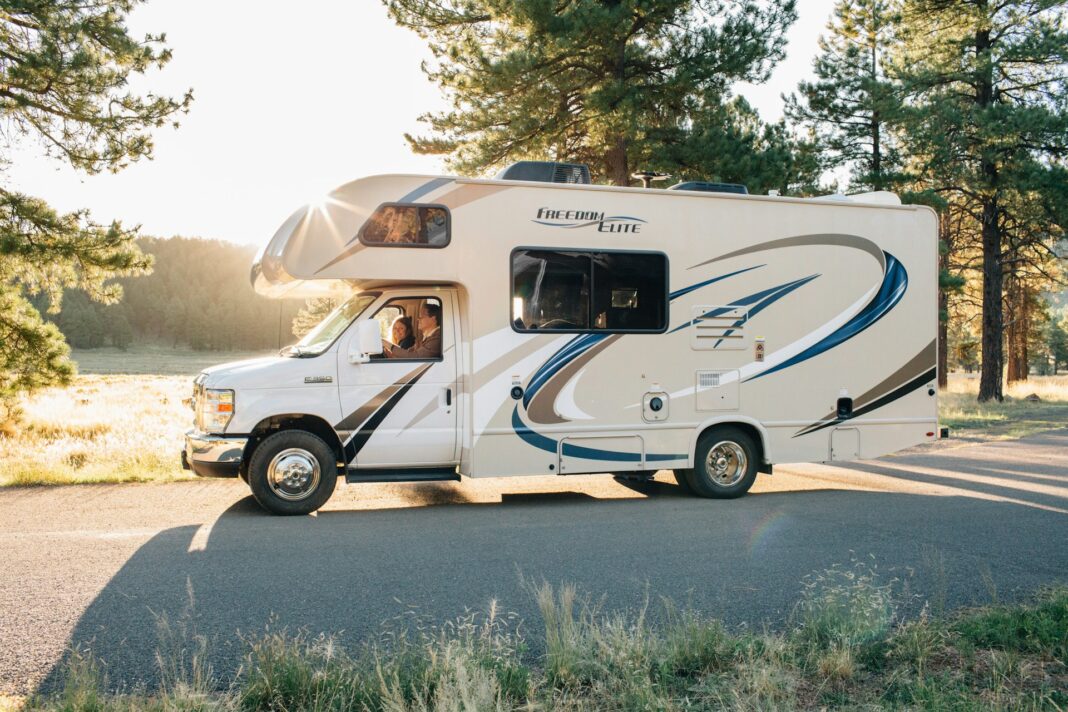RVs offer the freedom to travel in your own world at your own pace, but that freedom sometimes leaves a significant environmental footprint. The good news is that you could make a meaningful difference and make your RV more sustainable with a few smart changes.
Simple upgrades like replacing older systems with more efficient ones, cutting single-use items, and conserving resources could all go a long way. For larger improvements like adding solar panels or high-efficiency appliances, an RV loan may help you go all in and embrace a more environmentally friendly vehicle without breaking your budget.
Here are a few ways to put your changes in motion.
Start with energy efficiency
Making your RV more energy efficient is one of the best ways to lower your footprint and save on fuel. Energy-efficient upgrades might pay off over time and give you more flexibility on the road. There are several upgrades to consider, including:
- Installing solar panels: Tapping into solar power could make your setup more self-sufficient. Solar panels reduce generator use, help you stay off-grid longer, and power essential appliances without emissions.
- Swapping in LED lighting: LEDs use less energy than traditional bulbs and last much longer. Swapping out your cabin, exterior, and brake lights is a small change that could add up to real savings.
- Choosing energy-efficient appliances: If you’re upgrading your fridge, air conditioner, or other big appliances, look for high-efficiency models. These appliances draw less power and could help stretch your battery life, especially if you’re running solar.
Some upgrades cost more upfront, but you have options. Whether you save up or take out a personal loan, these improvements could be doable without holding off on your plans.
Reduce waste on the road
One of the simplest ways to make your RV adventures more sustainable is to reduce unnecessary waste. Start with reusables. Bring containers for food storage, collapsible bins for recyclables, and microfiber cloths instead of paper towels. Small swaps could help you cut down on single-use items that quickly fill your trash bin.
You could also switch to biodegradable options where reusables aren’t easy to find. Look for greener substitutes for everyday household items, like compostable trash bags, plant-based sponges, and eco-friendly dishware.
Finally, plan for proper disposal. Keep separate bins for trash and recycling,g and look for spots along your route, like campgrounds or RV parks, where you could responsibly dispose of waste.
Watch your water usage
Conserving water is a huge part of creating a more sustainable RV. If you’re boondocking — off-the-grid camping away from water or electricity hookups — water conservation becomes even more important. You could stretch your supply further with a few small changes while reducing your environmental impact. You might think about the following:
Replacing fixtures
One of the easiest upgrades you could make is replacing your standard faucets and shower heads with low-flow alternatives. Many options — including some designed specifically for RVs — keep your water pressure strong while reducing your consumption.
Adopting efficient habits
Minor changes to your routine build over time and give you small wins. Take your first steps into more sustainable habits by turning off the tap while brushing your teeth or scrubbing dishes. In the shower, rinse off quickly, turn the water off to soap and shampoo, and then rinse again. Using items like dry shampoo or wipes between showers may also help you cut back on water use.
Using a composting toilet
Traditional toilets use a significant amount of water with each flush. A composting toilet is a great alternative because it doesn’t require water. Instead, composting toilets work by breaking down waste into solid compost. Not only is a composting toilet environmentally friendly, but it could also help you stay off the grid longer. Less water use could mean fewer stops to refill your freshwater tank.
Stay at eco-friendly parks
Look for parks with green certifications or documented sustainability efforts. Many of these parks have solar or wind power, composting toilets, rainwater recycling systems, or plastic-free policies. Some locations also highlight locally sourced food or participate in conservation initiatives.
If you like to boondock, follow Leave No Trace principles and pack out all waste. Sticking to established sites on public lands, such as locations managed by the Bureau of Land Management (BLM areas), may help lessen environmental disruptions.
Whether you’re at a certified green campground or on public land, camping responsibly helps protect the nature we all love.
Travel far, leave less behind
Sustainable RV travel isn’t just possible, it’s practical. With some planning and smart tools, your RV could be an even cleaner and more efficient home on wheels. Enjoy the journey knowing you’re leaving less behind.
Notice: Information provided in this article is for information purposes only and does not necessarily reflect the views of upscalelivingmag.com or its employees. Please be sure to consult your financial advisor about your financial circumstances and options. This site may receive compensation from advertisers for links to third-party websites.





